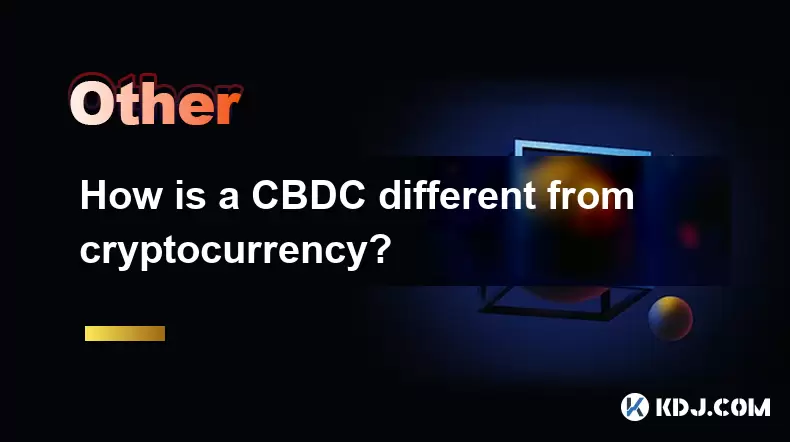-
 Bitcoin
Bitcoin $118300
-3.52% -
 Ethereum
Ethereum $4554
-3.81% -
 XRP
XRP $3.090
-5.78% -
 Tether USDt
Tether USDt $1.000
0.04% -
 BNB
BNB $842.0
-0.27% -
 Solana
Solana $194.6
-3.24% -
 USDC
USDC $0.9998
0.00% -
 TRON
TRON $0.3600
-0.20% -
 Dogecoin
Dogecoin $0.2243
-7.95% -
 Cardano
Cardano $0.9066
2.57% -
 Hyperliquid
Hyperliquid $45.89
-4.06% -
 Chainlink
Chainlink $22.49
-5.34% -
 Stellar
Stellar $0.4261
-6.01% -
 Sui
Sui $3.753
-5.87% -
 Bitcoin Cash
Bitcoin Cash $592.1
-3.33% -
 Ethena USDe
Ethena USDe $1.001
-0.01% -
 Hedera
Hedera $0.2502
-5.51% -
 Avalanche
Avalanche $23.71
-6.22% -
 Litecoin
Litecoin $121.8
-6.36% -
 Toncoin
Toncoin $3.416
-2.58% -
 UNUS SED LEO
UNUS SED LEO $9.323
0.85% -
 Shiba Inu
Shiba Inu $0.00001291
-6.93% -
 Uniswap
Uniswap $10.91
-9.13% -
 Polkadot
Polkadot $4.010
-5.38% -
 OKB
OKB $93.46
-9.08% -
 Dai
Dai $0.9999
0.00% -
 Bitget Token
Bitget Token $4.559
-4.99% -
 Cronos
Cronos $0.1545
-6.93% -
 Ethena
Ethena $0.7362
-5.51% -
 Aave
Aave $311.6
-4.32%
How does blockchain impact the finance industry?
Blockchain revolutionizes finance by enabling secure, transparent, and near-instant transactions through decentralization, smart contracts, and tokenization—reducing fraud, cutting costs, and expanding access globally.
Aug 13, 2025 at 11:36 am

Revolutionizing Transaction Processing
Blockchain technology has redefined the way financial transactions are processed by introducing a decentralized and transparent ledger system. Traditional financial institutions rely on centralized databases that are prone to manipulation, delays, and high operational costs. With blockchain, every transaction is recorded on a distributed ledger accessible to all network participants, eliminating the need for intermediaries such as clearinghouses or central banks. This peer-to-peer transaction model reduces settlement times from days to minutes or even seconds. For example, cross-border payments that once took 3–5 business days now settle in under an hour using blockchain-based platforms like RippleNet. The immutability of blockchain entries ensures that once a transaction is confirmed, it cannot be altered, drastically reducing fraud and enhancing auditability.
Enhancing Security and Reducing Fraud
Security remains a top concern in the finance industry, where cyberattacks and data breaches cost billions annually. Blockchain combats these threats through cryptographic hashing and consensus mechanisms like Proof of Work (PoW) or Proof of Stake (PoS). Each block contains a unique hash of the previous block, forming a chain that is nearly impossible to tamper with without altering all subsequent blocks. Financial institutions adopting blockchain benefit from end-to-end encryption and decentralized storage, making it significantly harder for hackers to compromise the entire system. Additionally, smart contracts—self-executing agreements coded on the blockchain—automate processes like loan disbursements or insurance payouts, reducing human error and eliminating opportunities for fraudulent manipulation. Banks such as JPMorgan have already implemented blockchain-based systems like JPM Coin to secure internal transactions between institutional clients.
Democratizing Access to Financial Services
One of the most transformative impacts of blockchain in finance is its ability to extend services to the unbanked and underbanked populations. Over 1.7 billion adults globally lack access to traditional banking, often due to geographic, economic, or political barriers. Blockchain-powered decentralized finance (DeFi) platforms allow users to access loans, savings, and investment tools using only a smartphone and internet connection. Wallets like MetaMask or Trust Wallet enable individuals to store digital assets and interact with DeFi protocols without needing a bank account. Lending platforms such as Aave and Compound use smart contracts to automate interest rates and collateral management, enabling peer-to-peer lending without credit checks or paperwork. This shift reduces dependency on centralized financial institutions and empowers users with full control over their assets.
Streamlining Regulatory Compliance and Auditing
Regulatory compliance is a major operational burden for financial firms, requiring extensive documentation and real-time monitoring. Blockchain simplifies this through transparent, time-stamped, and tamper-proof recordkeeping. Regulators can be granted read-only access to a permissioned blockchain, allowing them to monitor transactions in real time without compromising privacy. This capability supports real-time auditing and reporting, reducing the need for manual reconciliation. For instance, the Monetary Authority of Singapore (MAS) has piloted Project Ubin to explore blockchain for interbank payments and regulatory oversight. Know Your Customer (KYC) and Anti-Money Laundering (AML) procedures also benefit from blockchain. Once a user’s identity is verified and stored on the blockchain, it can be securely shared across institutions, eliminating redundant checks and accelerating onboarding.
Transforming Asset Tokenization and Ownership
Blockchain enables the tokenization of real-world assets, converting physical or legal ownership into digital tokens on a blockchain. These tokens represent fractional ownership of assets such as real estate, stocks, art, or commodities. For example, a $1 million property can be divided into 100,000 tokens, each worth $10, allowing smaller investors to participate. Platforms like Polymath and Securitize provide infrastructure for issuing and managing security tokens compliant with financial regulations. Secondary trading of tokenized assets occurs on decentralized exchanges (DEXs), increasing liquidity and market efficiency. This process reduces barriers to entry, enhances price discovery, and enables 24/7 trading without reliance on traditional stock exchanges. Asset-backed stablecoins like USDC and PAX also rely on tokenization, offering digital representations of fiat currency with full reserves.
Optimizing Operational Efficiency in Back-Office Functions
Back-office operations in finance—including reconciliation, settlement, and recordkeeping—are often slow and error-prone due to siloed systems and manual intervention. Blockchain introduces automated reconciliation through shared ledgers, where all parties view the same data in real time. This eliminates discrepancies and reduces the need for dispute resolution. For securities trading, delivery versus payment (DvP) settlements can be executed instantly via smart contracts, ensuring that asset transfer and payment occur simultaneously. The Australian Securities Exchange (ASX) has replaced its legacy clearing system with a blockchain-based solution to streamline post-trade processing. Operational costs are reduced by minimizing manual labor, paper-based processes, and intermediary fees. Internal audits become faster as every transaction is permanently recorded and easily traceable.
Frequently Asked Questions
Can blockchain completely replace traditional banking systems?
While blockchain offers superior efficiency and transparency, it does not fully replace traditional banking systems at this stage. Instead, it complements them by enhancing specific functions like cross-border payments and settlement. Many banks integrate blockchain into existing infrastructure rather than abandoning legacy systems entirely.
How do smart contracts ensure financial agreements are enforced without intermediaries?
Smart contracts are coded with predefined rules on a blockchain. When conditions such as payment receipt or deadline arrival are met, the contract automatically executes actions like releasing funds or transferring ownership. Since the code runs on a decentralized network, no single party controls the outcome, ensuring trustless execution.
Are blockchain-based financial transactions private?
Public blockchains offer transparency, meaning transaction details are visible to all, though user identities are pseudonymous. Private or permissioned blockchains restrict access, allowing only authorized participants to view data. Financial institutions often use these to balance transparency with confidentiality.
What prevents someone from altering a blockchain transaction after it’s confirmed?
Each block contains a cryptographic hash of the previous block. Altering any transaction would require recalculating all subsequent hashes and gaining control of over 51% of the network’s computing power—a feat that is computationally impractical and economically unfeasible on large networks like Bitcoin or Ethereum.
Disclaimer:info@kdj.com
The information provided is not trading advice. kdj.com does not assume any responsibility for any investments made based on the information provided in this article. Cryptocurrencies are highly volatile and it is highly recommended that you invest with caution after thorough research!
If you believe that the content used on this website infringes your copyright, please contact us immediately (info@kdj.com) and we will delete it promptly.
- Kazakhstan's Crypto Leap: Bitcoin ETF and Central Asia's Digital Finance Future
- 2025-08-13 12:45:19
- BlockDAG Presale Blazes Past $371M: Fundraising Frenzy Fuels Crypto Sensation
- 2025-08-13 13:05:21
- Meme Coins: Chasing the 2025 Surge – Which Will Moonshot?
- 2025-08-13 10:25:23
- Bitcoin's Wild Ride: Rally, Pullback, and What's Next
- 2025-08-13 10:25:23
- Bitcoin, Bitmax, and Institutional Demand: A New Era of Crypto Investment
- 2025-08-13 10:45:12
- Solana, ROAM, and Airdrops: What's the Buzz in 2025?
- 2025-08-13 11:35:13
Related knowledge

How does blockchain enable Web3?
Aug 13,2025 at 11:35am
Understanding the Role of Blockchain in Web3 InfrastructureBlockchain serves as the foundational layer upon which Web3 is built, enabling a decentrali...

How is a CBDC different from cryptocurrency?
Aug 12,2025 at 09:21am
Understanding the Core Nature of CBDCsA Central Bank Digital Currency (CBDC) is a digital form of a country’s sovereign currency, issued and regulated...

What is a CBDC (Central Bank Digital Currency)?
Aug 13,2025 at 11:36am
Understanding the Concept of a Central Bank Digital CurrencyA CBDC (Central Bank Digital Currency) is a digital form of a country’s fiat currency that...

How can zero-knowledge proofs enhance privacy on a blockchain?
Aug 12,2025 at 02:15am
Understanding Zero-Knowledge Proofs in Blockchain ContextZero-knowledge proofs (ZKPs) are cryptographic protocols that allow one party (the prover) to...

How does blockchain governance work?
Aug 13,2025 at 11:35am
Understanding Blockchain GovernanceBlockchain governance refers to the mechanisms and processes through which decisions are made about the development...

What is on-chain vs. off-chain data?
Aug 13,2025 at 11:35am
Understanding On-Chain Data in CryptocurrencyOn-chain data refers to all information that is permanently recorded and stored directly on a blockchain....

How does blockchain enable Web3?
Aug 13,2025 at 11:35am
Understanding the Role of Blockchain in Web3 InfrastructureBlockchain serves as the foundational layer upon which Web3 is built, enabling a decentrali...

How is a CBDC different from cryptocurrency?
Aug 12,2025 at 09:21am
Understanding the Core Nature of CBDCsA Central Bank Digital Currency (CBDC) is a digital form of a country’s sovereign currency, issued and regulated...

What is a CBDC (Central Bank Digital Currency)?
Aug 13,2025 at 11:36am
Understanding the Concept of a Central Bank Digital CurrencyA CBDC (Central Bank Digital Currency) is a digital form of a country’s fiat currency that...

How can zero-knowledge proofs enhance privacy on a blockchain?
Aug 12,2025 at 02:15am
Understanding Zero-Knowledge Proofs in Blockchain ContextZero-knowledge proofs (ZKPs) are cryptographic protocols that allow one party (the prover) to...

How does blockchain governance work?
Aug 13,2025 at 11:35am
Understanding Blockchain GovernanceBlockchain governance refers to the mechanisms and processes through which decisions are made about the development...

What is on-chain vs. off-chain data?
Aug 13,2025 at 11:35am
Understanding On-Chain Data in CryptocurrencyOn-chain data refers to all information that is permanently recorded and stored directly on a blockchain....
See all articles

























































































